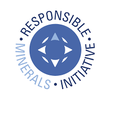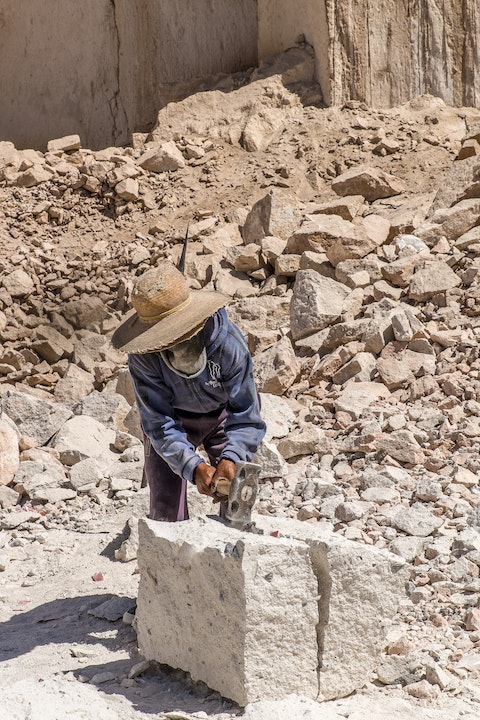The EMRT (Extended Minerals Reporting Template) is a free resource from the RMI (Responsible Minerals Initiative). It facilitates the reporting of mining and smelting sources for cobalt and mica. As its title suggests, the EMRT is an extension of the CMRT (Conflict Minerals Reporting Template), which only covers tin, tantalum, tungsten, and gold (3TG).
Let’s start by discussing the targeted minerals.
Cobalt has the symbol Co and is the 27th element on the periodic table. It is identified by the CAS number 7440-48-4.
Cobalt’s main application is lithium-ion batteries in the form of lithium cobalt oxide, LiCoO2. Batteries provide power by creating an electric current. In the case of a lithium-ion battery, electrons get released to form a current as lithium ions travel from the anode, sometimes made of graphite, towards the cathode, made of lithium cobalt oxide. Electric vehicles, computers and phones use lithium-ion batteries. As the demand for these devices increases, the strain on cobalt mining increases.

Cobalt does not exist in a pure atomic form in nature. The primary source is a byproduct of nickel and copper mining. As a result, the largest producer of cobalt is the Democratic Republic of Congo (DRC), which contains a region called the Copperbelt. Unfortunately, this area is known for being a place of instability and conflict. Investments in mining have the potential to fund armed violence.
The increase in demand also leads to artisanal mining, meaning small-scale subsistence operations with dangerous working conditions and concerns over child labour and pollution.

Several cobalt compounds are dangerous for human health. For example, Cobalt(II) sulphate may be cancerous. It is subject to California’s Proposition 65 and the European Union’s REACH (Registration Evaluation Authorisation and Restriction of Chemicals) as an SVHC (Substances of Very High Concern).
Mica is a type of crystal. It is considered a phyllosilicate. In other words, the atomic structure consists of sheets of oxygen atoms forming tetrahedron units with silicon atoms at their center. Multiple sheets are then held together by more oxygen, aluminum and potassium atoms. However, this chemical lattice structure allows mica crystals to break into thin sheets, otherwise known as their cleavage, making them easier to manipulate.
Mica is known for its electrical insulation and thermal conductivity properties. Because of this, it is a popular choice for the dielectric components in capacitors. The purpose of capacitors is to store electric potential by maintaining a positive and negative end. Between these two sides, an electrical insulator, called a dielectric, must be used to ensure that the two sides do not directly exchange their charges and eliminate the potential between them. The most common type of mica for this application is called muscovite.


Mining of mica is most prevalent in India and Madagascar. Similarly to cobalt, its mining relies on artisanal operations. Many mines are thus unregulated and employ child labour from poor communities. Hence, the human rights violations from the unsafe work conditions prompted the RMI to create the EMRT.

Mineral | Electronic Applications | Principal Mining Areas |
|---|---|---|
Cobalt | Lithium-ions battery | DRC |
Mica | Capacitors | India, Madagascar |
We can now discover the EMRT.
The Responsible Minerals Initiative is an organization bringing together companies from different industries to discuss issues in mining. It first released the Extended Minerals Reporting Template on October 21st, 2021.
After that, it retired its separate Mica Reporting Template (MRT) and Cobalt Reporting Template (CRT) on March 31st, 2022, to prioritize its combined form.
It is a form that companies can use to gather information from their supply chain about the origin of their cobalt and mica. In addition, the EMRT contains a list of smelters currently known to the RMI that is updated frequently.


While filling out the template, suppliers must answer questions about their mining or smelting sources and the due diligence practices of their supply chain. That is to say that the supply chain should be constantly aware of the effects of their extraction and avoid causing or feeding into human rights violations. It does not mean that all industries should retreat from conflict-affected and high-risk areas (CAHRAs) but that businesses are responsible for making ethical choices.
Due to the possibility of mining cobalt and mica from CAHRAs and the increased demand for these minerals in the electronic industry, it is paramount to track their sources to ensure ethical production.
Along with EMRT, the CMRT is not a legally binding document but a resource. The CMRT helps manufacturers track their use of the 3TG (Tin, Tantalum, Tungsten, and Gold) to conform with due diligence laws such as section 1502 of the US Dodd-Frank Act or the European Union’s Conflict Minerals Regulation 2017/821. While cobalt and mica are not subject to the same acts, the RMI developed the EMRT to aid in recording mineral sourcing.

Contact Enviropass for more information on conflict mineral reporting.